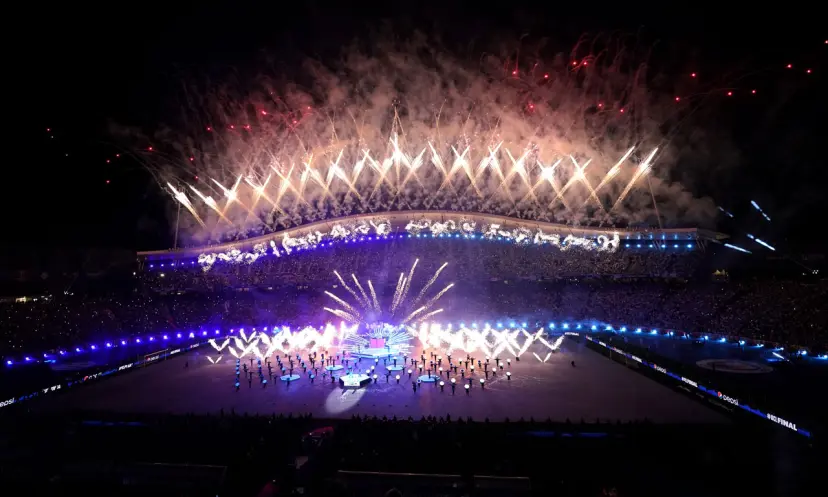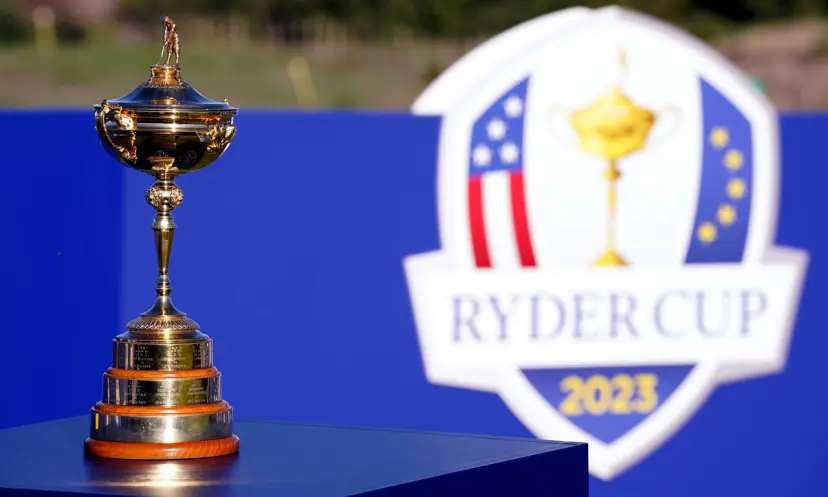2023 US PGA Championship overview and course guide
Published:
For the second major in succession, membership of golf’s most elite club is up for grabs as the 2023 US PGA Championship returns to Oak Hill Country Club for the first time since 2013.
Yet if any reminders were needed of how difficult it was to complete a career grand slam, the events of the last few weeks have provided plenty.
First was Rory McIlroy’s performance at the Masters as he sought to join Gene Sarazen, Ben Hogan, Gary Player, Jack Nicklaus and Tiger Woods in having won all four major titles, the Northern Irishman missing the cut in dispiriting fashion after a second round of 77.
Then there was Jon Rahm’s victory at Augusta National, the Spaniard indicating he could be the man to beat going forward after claiming a second major title by four shots, despite starting the week by four-putting the first hole.
And finally came the news that Jordan Spieth, who needs to win the US PGA to complete the grand slam, is suffering from an untimely wrist injury which forced him to withdraw from the AT&T Byron Nelson.
.@attbyronnelson pic.twitter.com/R0OCsbh6XG
— Jordan Spieth (@JordanSpieth) May 8, 2023
Spieth’s best result in the US PGA is second behind Jason Day in 2015, the year he won the Masters and US Open and missed out on a play-off in the Open Championship by a single shot, while he was also a somewhat distant third to Brooks Koepka in 2019.
A subsequent loss of form ended with victory in the Valero Texas Open the week before finishing third in the 2021 Masters, with Spieth also battling Collin Morikawa for the Open title at Royal St George’s three months later.
After missing the cut in the Masters for the first time in his career in 2022, Spieth bounced back to win the RBC Heritage the following week and this year finished fourth in the Masters thanks to a closing 66.
Seven days later, Spieth lost to US Open champion Matt Fitzpatrick in a play-off for the RBC Heritage and looked to be in ideal shape for the US PGA, but with his participation in serious jeopardy and Tiger Woods also ruled out through injury, attention may once again turn to McIlroy, who is the 11/1 third favourite in the 2023 US PGA Championship odds.
McIlroy is a member at Oak Hill – his wife Erica is from the area – and was the defending champion when it last staged the US PGA a decade ago, with Jason Dufner shooting 10 under par to win by two shots from Jim Furyk.
The East Course has been significantly renovated since then to better reflect the original Donald Ross design, with all of the greens and bunkers rebuilt and hundreds of trees removed.
The PGA Championship is almost here. Get ready with Choice Shots driven by @NationalPro. #PGAChamp pic.twitter.com/CYKkuFh2ZL
— PGA Championship (@PGAChampionship) May 11, 2023
The old sixth hole has been replaced by a shorter par three which now slots in as the fifth, with the fifth becoming the sixth hole on the card and lengthened to 504 yards.
The par-three 15th also has an entirely different green that has been repositioned and is no longer guarded by a pond, changes that have met with McIlroy’s approval.
“I think Andrew Green’s done a really good job,” he said. “I think the renovation has hopefully restored the East Course back to its former glory.
“From the last time I was there, or we were all there (in 2013), my connection to Rochester’s got a lot stronger. I’m excited to go and play a major championship in what feels almost like a second home to me.”
2023 US PGA Championship course guide
1st, 460 yards, par four: A long drive can take advantage of a fairway downslope at around 260 yards, leaving a short iron into a generous green. Danger lurks in the out of bounds to the right.
2nd, 405 yards, par four: Deep bunkers on both sides of the fairway must be avoided. Keeping the approach below the hole will offer the best birdie chance as the green is very quick from behind the hole.
3rd, 230 yards, par three: Deep bunkers guard both sides of the small green and missing it long and right will leave a hugely difficult up and down. Always ranks as one of the hardest holes.
4th, 615 yards, par five: Lengthened by 45 yards since the 2013 US PGA. Deep fairway bunkers and out of bounds on the right must be avoided. Green slopes from back to front.
All is calm & quiet at Oak Hill. That changes soon. 🏆 ⛳️#PGAChamp pic.twitter.com/ayUtMl76SH
— PGA Championship (@PGAChampionship) May 7, 2023
5th, 180 yards, par three: The previous par-three sixth has been removed from the layout and replaced with a shorter hole which slots in as the fifth. A two-tiered green surrounded by four deep bunkers demands an accurate tee shot.
6th, 503 yards, par four: Previously the fifth hole, the sixth features a tough tee shot which must travel through a shoot of trees for more than 215 yards and then avoid a creek that winds itself into the landing area.
7th, 461 yards, par four: Around 30 yards has been added to make a tough drive to a narrow fairway even more daunting. A creek on the right will catch any errant drives and the small green will require an accurate approach.
8th, 429 yards, par four: A good drive to the right half of the fairway is needed, avoiding two deep bunkers on the left that may take the green out of range. The large green offers some interesting hole locations, especially on the back-right portion.
9th, 482 yards, par four: A tough, uphill dogleg right where errant drives to the right of the fairway risk being out of bounds or blocked out by trees. The green slopes from back to front.
10th, 430 yards, par four: The sloping fairway makes the landing area much tighter than normal and being on the short grass is a must to control the approach into a small green protected by three bunkers.
11th, 245 yards, par three: The prevailing left-to-right wind will send balls towards a creek to the right of the green. Howard Clark made a hole-in-one during his singles win over Peter Jacobsen in the 1995 Ryder Cup, albeit from 176 yards.
Two Hop Drop— An unforgettable hole in one for Tim Clark during the 2013 PGA Championship at Oak Hill. #PGAChamp | #TopShotTuesday pic.twitter.com/JDHaW654pl
— PGA Championship (@PGAChampionship) May 2, 2023
12th, 399 yards, par four: The big hitters will be able to get fairly close to the green, but most players will use a long iron off the tee to find the well-guarded fairway and leave a full approach shot into a green guarded by three bunkers.
13th, 623 yards, par five: The “Hill of Fame” hole had reputedly never been reached in two before the 2013 US PGA and has since been extended by 25 yards. A creek also bisects the fairway at 325 yards to force most players to lay up and leave a long, uphill approach.
14th, 320 yards, par four: Easily the shortest par four on the course could tempt players to try to drive the green, despite the uphill approach to a two-tiered green.
15th, 155 yards, par three: Shortened by almost 30 yards and a pond which guarded the right side of the green has been removed. Two bunkers in front of the green and another to the left runs the length of the putting surface.
16th, 458 yards, par four: Plays shorter than its yardage thanks to a fairway downslope which provides an extra 30 yards of run. However, the landing area is narrow and a slope of the left side will kick most balls into the deep rough.
17th, 502 yards, par four: A par five for the members, the dogleg right requires a fade off the tee to prevent the ball from running through the fairway on the left into heavy rough. The undulating green is well protected by bunkers.
18th, 497 yards, par four: A new tee for the 2003 US PGA added more than 30 yards to this difficult finishing hole. The green slopes severely from back to front and sits between three bunkers right and one left.
All odds and markets correct at date of publication









